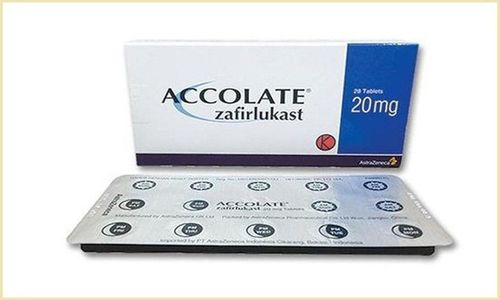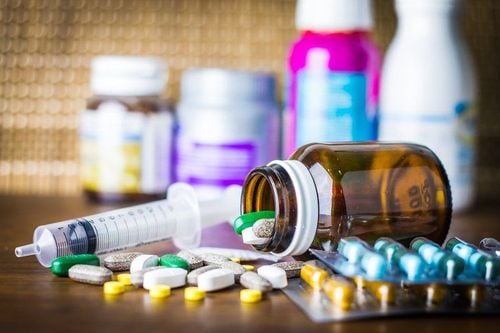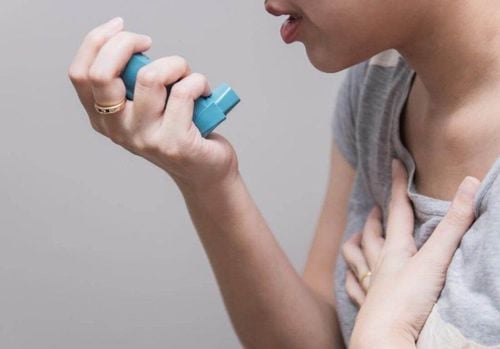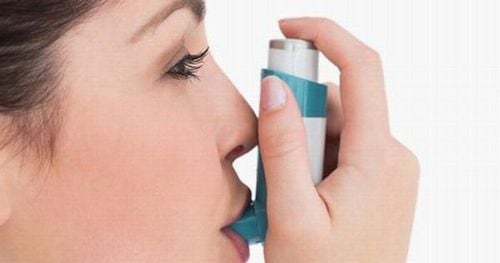This is an automatically translated article.
Inhaled corticosteroids are the first choice in the treatment and control of asthma. The drug has a very strong local effect, reducing irritation in the nose, bronchi and bronchioles, so it reduces spasms, reduces secretions, reduces inflammation and clears the airways. Although inhaled corticosteroids do not cause systemic toxicity, other undesirable effects should be taken into account.
1. Inhaled corticosteroids in asthma treatment
Corticosteroids inhaled through the mouth or inhaled through the nose are commonly used in the treatment of bronchial asthma. Most patients started on inhaled corticosteroids when they were still mild, or did not respond to inhaled bronchodilators such as salbutamol and terbutaline, or had a severe condition, dependent on oral corticosteroids. Whereas systemic corticosteroids enter the bloodstream and affect the whole body, inhaled corticosteroids act directly on the lungs in about 10-50%, the rest about 80-85% is swallowed in the stomach and inactivated in the liver. , causing fewer unwanted effects.
Long-term inhaled corticosteroids in asthma, especially at low doses, are generally safe. When corticosteroids are used in low and moderate doses, they can have a slight effect on growth, reducing the height of children by 1 cm in the first year of treatment. However, after that, the height of the child was not affected anymore. Young children treated with inhaled corticosteroids for asthma need regular height monitoring.
2. Adverse effects of inhaled corticosteroids
After prolonged use of inhaled corticosteroids when the drug is stopped, bronchial irritation may return, causing bronchospasm, worsening the disease. Therefore, caution should be exercised when using corticosteroids, not stopping the drug suddenly. Common undesirable effects when using inhaled corticosteroids include:
Oral thrush or thrush: To overcome this situation, the child should give the medicine through the spacer and rinse the mouth immediately after smoking and then spit it out. . Hoarseness: Administering the drug through the spacer helps to reduce this unwanted effect. If the child has hoarseness, the dose should be reduced temporarily. Cough or wheezing occurring after inhalation of corticosteroids due to bronchial reaction: can be prevented by slow inhalation through the spacer. If coughing or wheezing persists and gets worse, stop taking the medicine and tell your doctor right away.
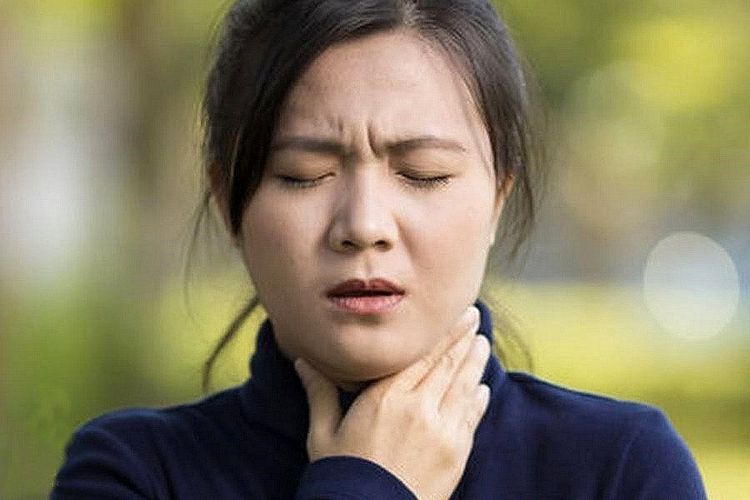
Corticosteroid dạng hít có thể khiến người bệnh khàn tiếng
3. Some notes when using inhaled corticosteroids
In chronic asthma is divided into 5 steps, depending on each step, the doctor will adjust the combination and dose:
Step 1: use a short inhaled beta-2 agonist Step 2: use a medium dose inhaled corticosteroid regular and short inhaled beta-2 agonists as needed Steps 3 and 4: regular use of high-dose inhaled corticosteroids in combination with long-inhaled beta-2 agonists Step 5: regular use of high-dose inhaled corticosteroids in combination with medication inhaled long-term beta-2 agonists and oral corticosteroids. Inhaled corticosteroids should not be used to treat allergic rhinitis in children under 12 years of age, especially beclomethasone should not be used in children under 6 years of age, and caution should be taken with latent tuberculosis (because immunosuppressants will cause tuberculosis disease). heavier). Inhaled corticosteroids also inhibit wound healing, so they are only used when respiratory injuries such as tears, scratches, or surgery have recovered.
In summary, inhaled corticosteroids are the first-line treatment for asthma control. The drug has a very strong local effect, reducing irritation in the nose, bronchi and bronchioles, so it reduces spasms, reduces secretions, reduces inflammation and clears the airways. Although inhaled corticosteroids do not cause systemic toxicity, other undesirable effects should be taken into account. Therefore, the patient needs to take the medicine as prescribed by the doctor, do not stop suddenly and when there are signs of a severe asthma attack, it is necessary to immediately go to the medical examination and treatment facility for timely medical intervention.
Please dial HOTLINE for more information or register for an appointment HERE. Download MyVinmec app to make appointments faster and to manage your bookings easily.





